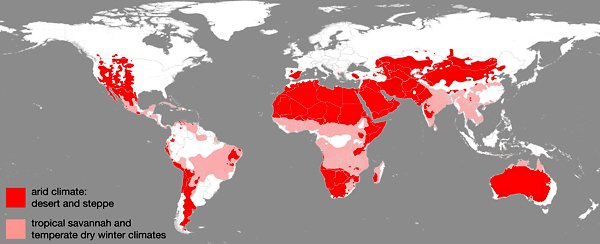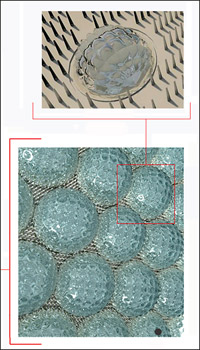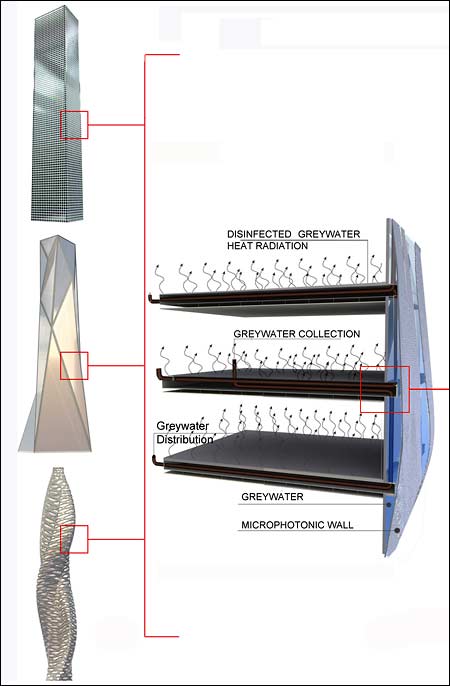NSF funds interdisciplinary team's grey water disinfection plan

A University of California, Berkeley, team has been awarded a $2 million National Science Foundation (NSF) grant for research on biologically-inspired technologies for grey water reuse and thermal energy management that may propel sustainable building into a new era.
The grant comes from the NSF's Emerging Frontiers in Research and Innovation’s 2010 Science in Energy and Environmental Design (EFRI-SEED) program for engineering sustainable buildings.

Leading UC Berkeley's award-winning, interdisciplinary research team as principal investigator is Maria-Paz Gutierrez, assistant professor of architecture in UC Berkeley's College of Environmental Design, and the only architect serving as principal investigator for any of the NSF's eight EFRI-SEED 2010 grants. Her work focuses on advancing sustainable building technologies, particularly for developing regions.
For the first time in the NSF's history, the inclusion of an architect was required in each request-for-proposal for this grant.
Also on the UC Berkeley team is Luke Lee, Lloyd Distinguished Professor in Bioengineering, director of the Biomolecular Nanotechnology Center and co-director of the Sensor & Actuator Center, at UC Berkeley. Lee is a distinguished scientist in the field of photonics and micro fluidics. The other team member is civil environmental engineer Slawomir Hermanowicz, a UC Berkeley professor of civil engineering renowned for his research involving biological water and wastewater treatment processes.
Together, the researchers are testing a new water-recycling system for a building system, designed for application in multi-story apartments. The recycling system couples the solar disinfection of grey water from kitchen sinks, showers, or laundries with thermal storage for energy management and light transmission control.
The real breakthrough within the collaboration, the researchers said, is their plan for a system of micro-optic lenses on exterior building walls that links the grey water disinfection process to radiant floor heating via a lightweight, thin membrane. The biologically-inspired compound solar lenses, or "eyes," have self-regulating fields of view for enhanced light absorption of up to about 150 degrees, and the lenses are contained inside a thin film that is applied to the walls.
The UC Berkeley researchers also said the lens array represents a huge improvement over current wall systems, whose solar systems to disinfect grey water and remove trace organic contaminants often rely on thick, heavy and more costly mechanical lenses, glass tubes and complicated moving parts.
Research on the effects of sunlight on microorganisms was first published in 1877, and the UC Berkeley researchers conceded that using solar energy to disinfect water is far from new. But they said there is a growing interest by architects as well as by scientists in the need for water reclamation and reuse in the face of increasingly dire forecasts of global warming and water stress, in arid as well as in tropical regions around the world.

Sustainability may appear fashionable today, Gutierrez said, yet there are skeptics questioning some of the new construction approaches being developed to radically advance resource conservation. "But with the rapid rate and large scales of new construction — particularly in emerging economies — 10 years from now the need to radically advance building systems’ resourcing capabilities will no longer be a matter of choice," she said.
Jennifer Wolch, dean of UC Berkeley's College of Environmental Design and the William W. Wurster Professor of City and Regional Planning, said the NSF grant "not only recognizes the creativity and technical rigor of Paz's work, but also her rare ability to integrate architecture and design into cutting edge work in science and engineering."
Tom Buresh, a professor of architecture and chair of UC Berkeley’s architecture department, said the grant "signals an important moment in architectural research where grants of this size and type are awarded to a group led by an architect skilled in design."
He said that Gutierrez "is at the forefront of next-generation designers who collaborate instinctively across disciplines and seamlessly utilize a combination of artistic and research practices to address the important issues of our time."
Wolch said the grant will accelerate the Chilean native's pioneering work to develop advanced biomimetic systems to reduce energy and water utilization in the management of buildings and will support development of a new, multidisciplinary minor in biomimetic design at UC Berkeley.
As a part of this "Solar Optics-based Active Pasteurization (SOAP) for Greywater Reuse and Integrated Thermal (GRIT) Building Control" project, the researchers will develop an interdisciplinary research course on new, integrated water-recycling exterior building wall technologies to move the manufacturing of new wall systems from micro-scale engineering to large-scale rapid prototyping.
Gutierrez noted that the Hellman Family Faculty Fund Award for junior faculty, which she received in 2009, provided critical early research support for the current grey water project.
More:
• Information on Maria-Paz Gutierrez's work.
• Information on Slawomir Hermanovicz and Luke Lee.